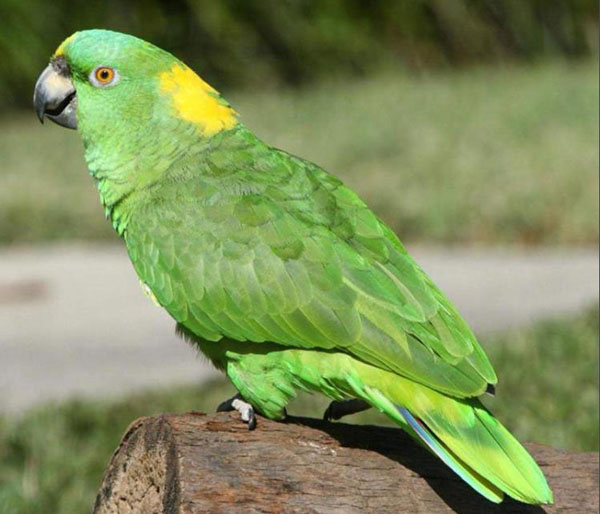Amazona auropalliata
IUCN
LCBasic Information
Scientific classification
- name:Amazona auropalliata
- Scientific Name:Amazona auropalliata,Amazona auropalliata,Yellow-necked Amazon Parrot, Yellow-necked Amazon Parrot
- Outline:Climbing birds
- Family:A.parrot Psittaciformes
Vital signs
- length:35cm
- Weight:480-680g
- lifetime:40-50years
Feature
A famous master of learning to speak
Distribution and Habitat
Distributed in Costa Rica, El Salvador, Guatemala, Honduras, Mexico, Nicaragua; Belize (migrant bird).
It mainly inhabits tropical or subtropical woodlands with dry or moist trees, plains with sparse trees, and woodlands with tall shrubs. It prefers the edge of the forest and also visits agricultural areas, orchards, and nearby villages. Vertical altitude 600-700 meters.
Appearance
The bird's body is green, with green forehead, top of head and thighs; the neck has unevenly distributed yellow feathers; the bend of the wings is green, and some birds also have a little red feathers scattered here; the beak is dark gray-black, and the iris is orange. Young yellow-necked Amazon parrots do not have obvious yellow feathers on their necks. Usually, they will become more obvious after 2-3 years old, and the yellow feathers will increase with age.
Details
The yellow-necked Amazon parrot is a typical climbing bird, with two toes facing forward and two toes facing backward, suitable for grasping. The bird's beak is strong and powerful, and can eat hard-shelled fruits. The feathers are bright and handsome. Most of the feathers are green.
It usually moves in pairs, sometimes in small groups, even up to hundreds. It is very obvious when flying back and forth from the habitat area, and it will roost on different trees at the same time, usually preferring to move along tall trees near water sources; when it is hot at noon, it will quietly roost in the shade of the trees to cool off; in the early morning, it will regularly fly to the water source to bathe; occasionally, it will visit agricultural areas, orchards and areas where crops are planted, causing damage to many crops. When foraging, it is quite quiet and can be observed at a limited distance; when traveling long distances, it usually flies very high, and most of the time it rests in the trees and flies to find places to forage, and its calls are very noisy and harsh.

Mainly feed on seeds, nuts, berries, flowers, and plant sprouts. They will regularly go to areas near the riverbank that are rich in mineral soil to eat soil. This is because many of their foods are immature seeds or fruits, which contain toxins. Eating soil can not only supplement minerals, but also help digestion and excrete these toxins in the body.
Nests are built in caves of tall trees. The breeding season begins in February and March, with 2-3 eggs per nest. Young birds usually have no yellow feathers on their necks. Yellow feathers on the back of the neck will gradually grow out at the age of 1-2. Yellow feathers on the neck will be fully grown at the age of 5, but not every bird has obvious yellow feathers.
Artificial breeding requires patience. Some yellow-necked Amazon parrots become unstable and aggressive due to jealousy and possessiveness of their owners. In breeding pairs of birds, many artificially bred birds are quite lively, outgoing, and not afraid of people. They adapt quickly to the environment, weather, food, and owners. Once they adapt to the new environment, they are quite strong. It is advisable to provide balanced food for breeding, and regularly provide mixed seeds, nuts, fruits and vegetables, grain feed, etc.
Yellow-necked Amazon parrots can imitate sounds, so they are very popular as pets. They are also threatened by the loss of habitat. Many parrots are not very adaptable to the environment. They often starve to death due to environmental changes, and some species even disappear from the earth. Yellow-necked Amazon parrots are different from them. In order to survive, they will adapt to the environment as quickly as possible, and after adapting, they will quickly become strong. It is because of this instinctive wisdom that they can still be active in people's sight and win people's favor.








